Dr. Manpal Singh Narula
Dr. Manpal Singh Narula
Orthopedic Implants & Advancement in operation theatre in Orthopedic
In this video SimpliHealth expert orthopedic Dr. MS Narula is talking about the advancement in operation theatre in orthopedic implants. Like in any surgery, infection is one complication that both the surgeon and the patient are afraid of, in fact the surgeon is more fearful than the patient, especially in orthopedic surgeries. Infections are troublesome, lingering, and don’t get better quickly if we talk about orthopedic surgeries. So our emphasis is that the operation theatre in which we do these surgeries should be sterile and as clean as possible. The more they are clean, the better.
We pay great attention to sterility, and the same advice I would like to give you is whenever you plan any orthopedic surgeries for yourself, make sure the OT is very clean and sterile. Once an orthopedic infection occurs, it is difficult to handle. So the new technique is the introduction of laminar airflow in the OTs in which the directions are such that the infected air doesn’t enter the operation theatre.
We have a new sterilisation technique. We have a specific entrance for OTs so that our orthopaedic OTs remain sterile and minimise the probability of infection, preferably 0-1% . Also, we would be very happy if we could control the orthopedics infection inside.
So this was all about operation theatre techniques now, we will talk about our operating techniques.
OPERATING TECHNIQUES
The difference in new operating techniques is that now they are minimally invasive. Minimal invasive is a very common word. Still, if I tell you in a simple layman’s language, it is performed with small incisions; a minimal cut is given, unlike in previous fractures where we used to provide a big incision. Now we give a small incision; we introduce the implant inside, and for this, we have one valuable piece of equipment: C-arm.
It is a specific X-ray machine used in operation theatres. And under fluoroscopic control, we put the implant inside. The advantage of this equipment is that we can see the X-ray along with the implant insertion. So these are minimally invasive. In these surgeries, we give a minimal incision. The recovery is faster since the incision is small.
The cosmetic scar will be more minor. It is bloodless, or there will be minimal blood loss, and of course, it will be painless. So these are some advantages of minimally invasive. The emphasis of all newer orthopaedic techniques is as far as possible; we operate bones in a closed way; it shouldn’t be opened too much, or we need to perform it in a closed manner. So it can be minimally invasive, treating fractures with small incisions.
Types of orthopedic implants
We have newer implants like nails, plates, or screws to fix the fractures. Advanced implants have made orthopedic surgeries very effective, safe, and quick both for the patients and surgeons. Indeed these implants are expensive. But, still, it has been a great boon to orthopedic surgeons.
TITANIUM IMPLANTS
So first, experts will talk about metal allergy Metallurgy; earlier, we used to put steel implants, but now we have titanium implants. The titanium implants are solid, conducive for fracture healing, and have a low infection rate. So for most surgeries, wherever patients can afford, we would like to use titanium implants. Talking about implants, I would like to tell you about the implants’ shape and structure. These days, we have pre-contour plates, which means pre-design plates for every bone. If you notice, this is our collar bone. We used to fix the collar bone or, say, shoulder bone by bending the plate a little bit, but now we have pre-contour plates that are already bent. So if you pay attention, this is the plate for collar bone, and this is for shoulder bone, so they are already turned, and we just need to put this with the bone and fix it. So it makes our surgeries very quick and increases the chances of fracture healing.
LOCKING PLATES
Talking about the design of plates, today we have locking plates. By this, we mean when the bones are weak, there is always a fear of screw coming out, so nowadays, such screws have become locked inside the plates. So the condition in which the implants may back out or nails or screws come out before the bone is attached doesn’t happen. So these pre-contour titanium plates are a very important advancement in our orthopedic trauma, which we take advantage of, and the patient’s healing and recovery are faster.
BIODEGRADABLE SCREWS
Next, we have some biodegradable screws, as you must have heard about ACL reconstruction, or in other surgeries, we insert such implants which dissolve inside, which we call biodegradable. So they dissolve after a few months or in years, and there is no need to remove them. Now some implants have a profile. Like earlier, the plates were thick, and due to scarcity of muscle below the skin, these plates used to prick. Now the plates have become very thin; these are low profile plates. The patient used to have problems with the older implants, the bones get healed, but they complained about the prick caused by screws or implants. And then, after a year or two, we had to remove these implants. But with these newer implants, we don’t find the reason to remove them unless in a few cases where those implants irritate them.
This is the typical question asked by the patients that doctor. Since the operation is complete, can we remove these screws or plates? So I would like to tell all my patients that unless the implants are irritating you, we don’t find the need to remove them. There are some indications that it should be inside only in a few cases, and it doesn’t affect us anywhere; they are inert. Many people think since it’s a metal, it might get rusty. But nothing like this used to happen. Then, of course, they become part of your body in many cases we recommend. But most of the time, they remain inside; they are very safe and do not damage the tissues.





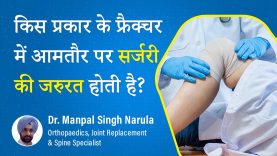


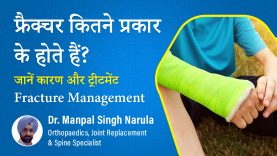

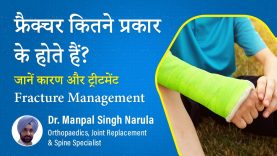


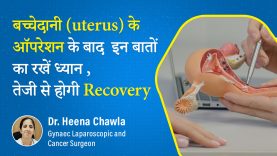
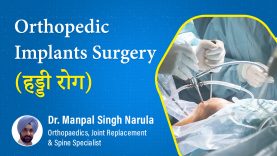
Comments (0)